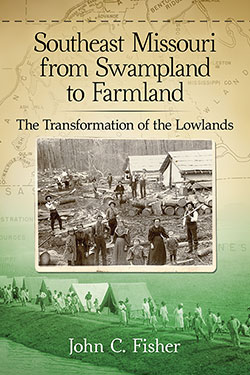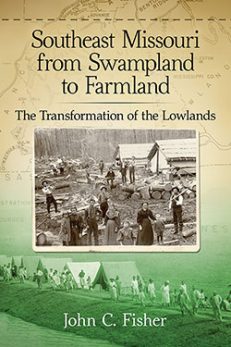Southeast Missouri from Swampland to Farmland
The Transformation of the Lowlands
$29.95
In stock
About the Book
As the 20th century began, swamps with immense timber resources covered much of the Missouri Bootheel. After investors harvested the timber, the landscape became overgrown. The conversion of swampland to farmland began with small drainage projects but complete reclamation was made possible by a system of ditches dug by the Little River Drainage District—the largest in the U.S., excavating more earth than for the Panama Canal.
Farming quickly took over. The devastation of Southern cotton fields by boll weevils in the early 1920s brought to the cooler Bootheel an influx of black and white sharecroppers and cotton became the principal crop. Conflict over New Deal subsidies to increase cotton prices by reducing production led to the 1939 Sharecropper Demonstration, foreshadowing civil rights protests three decades later.
About the Author(s)
Bibliographic Details
John C. Fisher
Format: softcover (6 x 9)
Pages: 260
Bibliographic Info: 62 photos, notes, bibliography, index
Copyright Date: 2017
pISBN: 978-0-7864-7995-5
eISBN: 978-1-4766-2791-5
Imprint: McFarland
Table of Contents
Table of Contents
Acknowledgments ix
Introduction 1
1. Geology and Geography of the Lowlands 5
2. The First Inhabitants 15
3. Euro-American Settlement to 1811 28
4. The New Madrid Earthquakes 39
5. Settlement, Early Agriculture and Civil War 56
6. Transportation 67
7. Timber 78
8. Beginning Reclamation 90
9. Little River Drainage District: Organization and Opposition 107
10. Little River Drainage District: Planning and Construction 120
11. Little River Drainage District: Floods, the Great Depression, Financial Failure and Recovery 135
12. Land Promotion, Post-Drainage Agriculture and Social Change 159
13. New Political and Religious Movements and the Sharecropper Demonstration 176
14. Politics and Farm Labor Changes 202
15. End of an Era 212
Chapter Notes 217
Bibliography 231
Index 239





